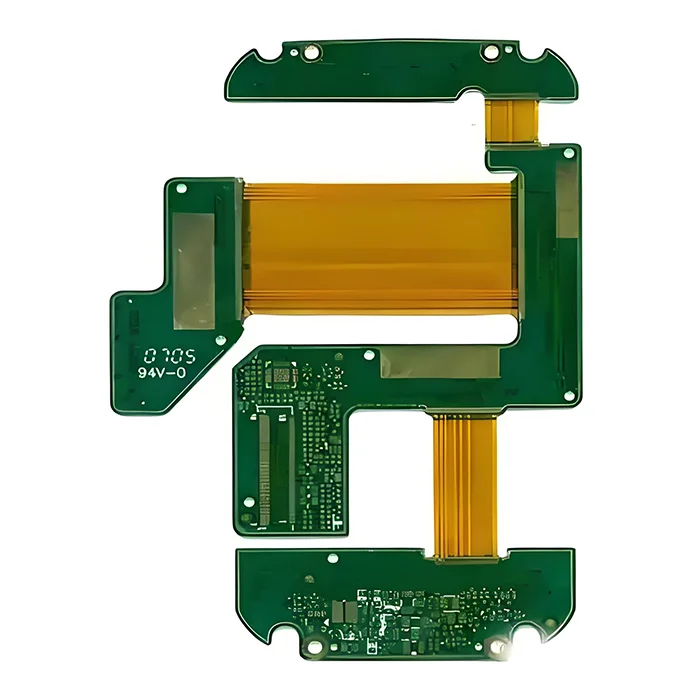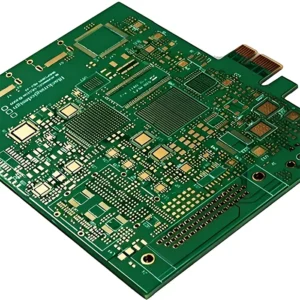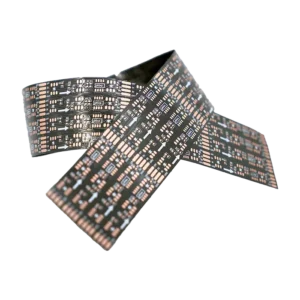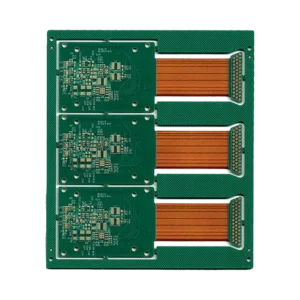4-Layer Rigid-Flex Automotive PCB
$78.90
4-layer rigid-flex automotive PCB incorporates the durability of rigid boards with the flexibility of foldable circuits, providing a dedicated, lightweight, and highly reliable solution. 4-layer design enhances signal integrity with dedicated signal, power, and ground planes.
Shipping fee and delivery date to be negotiated. Send inquiry for more details.
Your payment information is processed securely. We do not store credit card details nor have access to your credit card information.
Claim a refund if your order is missing or arrives with product issues, our support team would deal with your refund within 24 hours.
| Layer Counts | 4L |
| Base Material | Polymide + Rogers + FR4 |
| Board Thickness(mm) | 1.6mm |
| Max board size(mm) | 570*850mm |
| PCB size tolerance | ±0.2mm |
| Min. Hole Size | 0.15mm |
| Min. Line Width | 4mil |
| Copper Weight | 2oz |
| Surface Finish | ENIG |
| Certificate | UL, RoHS, ISO, ISO9001, ISO13485, IPC610, et REACH |
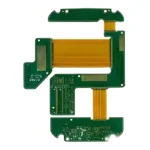 4-Layer Rigid-Flex Automotive PCB
4-Layer Rigid-Flex Automotive PCB
| 5 star | 0% | |
| 4 star | 0% | |
| 3 star | 0% | |
| 2 star | 0% | |
| 1 star | 0% |
Sorry, no reviews match your current selections
Questions & Answers
1. Does MOKOPCB support mass production?
Yes, we have the capacity to handle small to high-volume PCB production with automated assembly lines.
2. What solder mask color do you provide?
We provide Green, Red, Yellow, Blue, White, Black, and Purple.
3. Can I choose FR4 and polyimide as the laminates for the automotive PCB?
Yes, but there are some restrictions. High-Tg FR4 and polyimide provide thermality, flexibility, and reliability. The trade-off is that FR4 limits high-frequency performance, and this PCB with both FR4, polyimide, and Rogers offers a greater performance.
4. Why use FR4 as rigid section instead of other materials?
FR4 is a perfect rigid material because of its low cost, compliance with automotive standards, and sound mechanical and thermal performance for most non-RF applications. Other materials like Rogers, aluminum, or ceramic are either pricer, incompatible with flex bonding, or overqualified for standard ECU/lighting/infotainment PCBs.
5. Can this PCB handle 77GHz radar for ADAS?
Yes, our 4-layer PCB with FR4, polyimide, and Rogers laminates allows for handling high-frequency and flexible applications like ADAS, aerospace communication, and 5G equipment.
6. Will exposure to gasoline or brake fluid damage the rigid-flex automotive PCB?
When exposed to gasoline and brake fluid, polyimide has good chemical resistance in the short term, but Rogers and FR4 are more vulnerable. If exposed for a long time, it can degrade and damage the PCB. In case of potential damage, conformal coatings can be used for long-term reliability.
7. Why are laser-drilled vias necessary for flex sections of the rigid-flex automotive PCB?
Laser-drilled vias are critical for flex PCB because they provide high precision, avoid mechanical stress, and withstand repeated bending. Traditional mechanical drilling may cause delamination or cracking, while laser drilling ensures reliability, making it important in automotive applications.
8. Does reducing the flex layer count to 1-layer flex save cost?
Yes, reducing flex layers can reduce material, lamination, and drilling costs, but it may also limit routing density, increase EMI risks, and restrict power handling. Using 1 or 2 flex-layers can depend on specific applications. 1-layer flex solution can work for low-complexity, static, or non-critical applications, while most modern electronics, especially those that need frequent bending, high-speed signals, and power delivery, need to use 2 flex-layers for greater reliability and performance.

